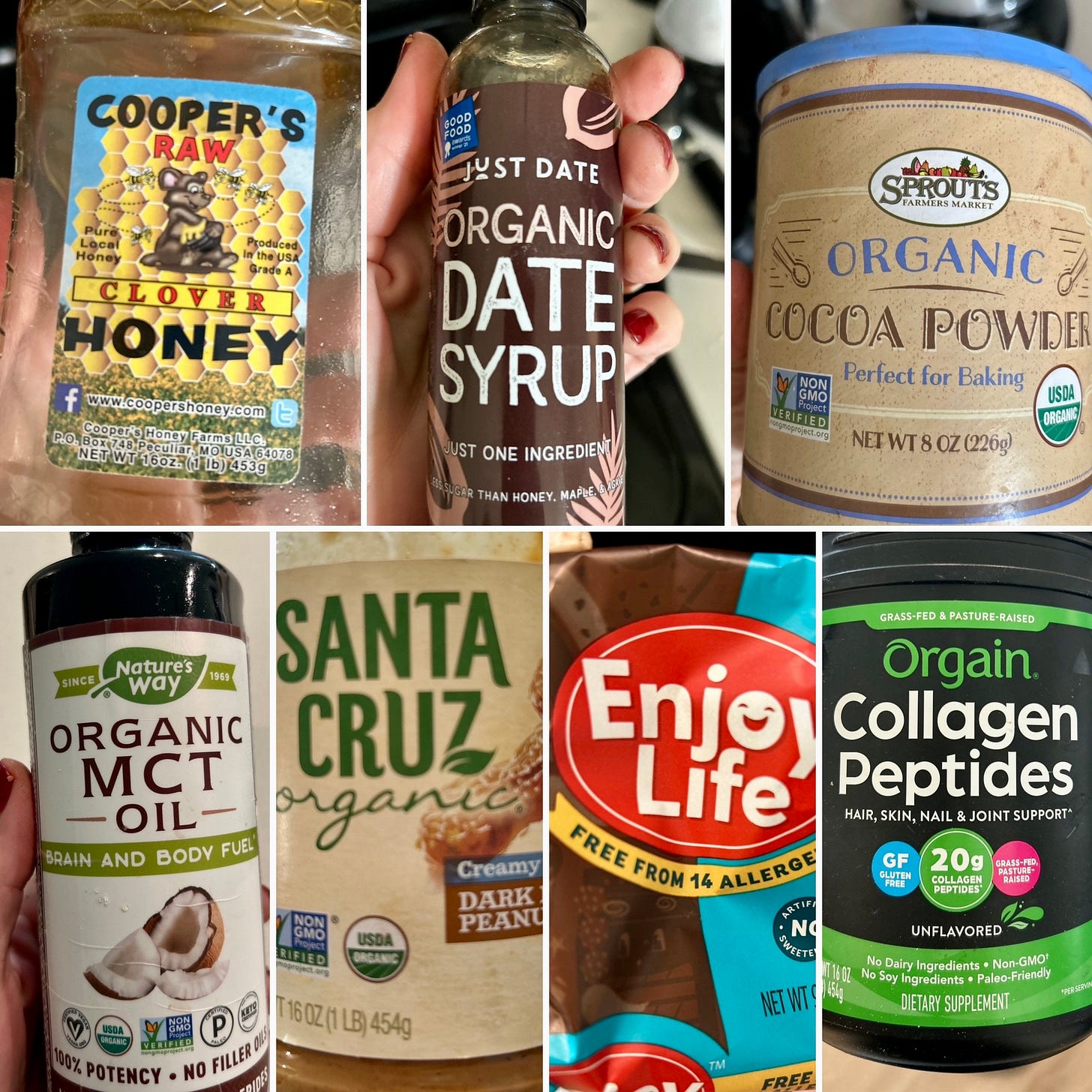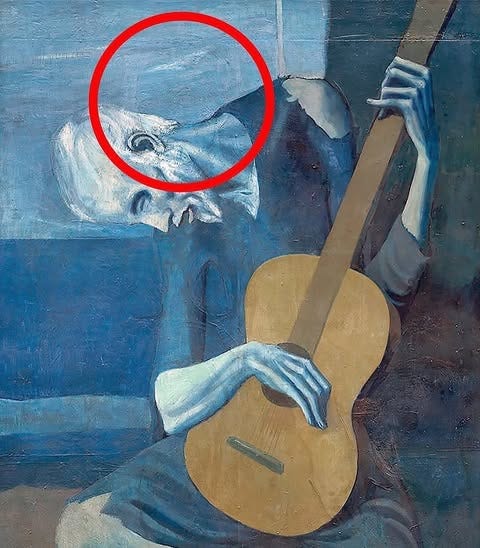Picasso | Addictions | A New Style
the Art & the Calm Episode #4
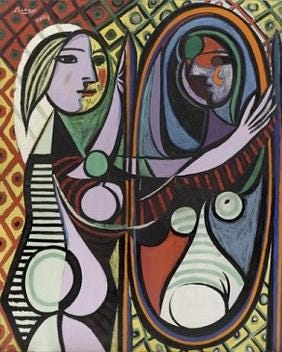
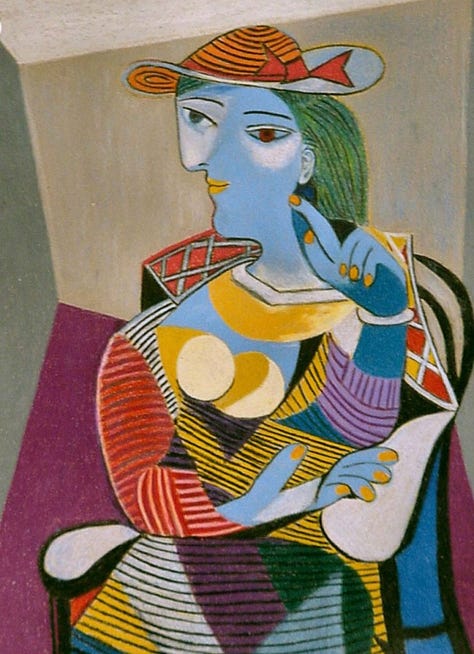

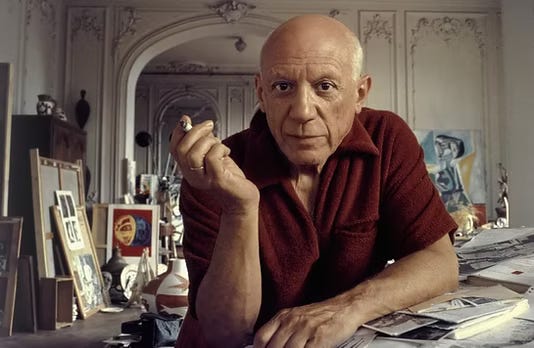

Reader shoutouts!
Special thanks to Wendy G. for her support from ‘buy me a coffee’
Also big thanks to Pat K. Amanda M. and Marianne P. for their annual subscriptions! This is a 100% reader supported mission. I strive to improve week in week out, and bring the best content from a real life, living & breathing artist.
Please share any feedback of what you love or would like to see in future posts! Email me at jackie@illustratingjoy.com
Introduction:
What does Pablo Picasso have to do with addiction?
With thousands of influencers shouting to “do this” or “don’t do that,” some become disenchanted on the quest for answers and slip back into self defeating ways. Why?
Addictions.
Addiction to comfort, avoidance of pain, justification that “everyone has their thing” sets the ball rolling towards another confrontation with the weaker self.
The addict, desperate for a hit of dopamine in the pleasure center of the mind, will continue to repeat dangerous, self destructive scenarios to experience the ease and comfort that accompanies that first shot, pill, bite, or hit.
We waste so much time trying to differentiate between various addictions, 12-step programs, and therapies, which ends up keeping us isolated with the thing that no longer gives us the coveted high we seek.
Picasso had an addiction to loving women. Maybe it served him in his quest for thrill and passion, but what happened to the women left in his wake? Someone inevitably experiences pain from of an addiction. Either the user, or those who love the user.
My own struggles:
Last year, I connected with a dark haired, muscular, 23-year-old life coach, in hopes of expanding my business. Eager to overcome self-defeating habits, I contacted this young man I admired via social media. His services were pricey, but I remained hopeful.
A friend in her 50s encouraged me and said, “Age means nothing, sometimes people have old souls, go for it!” The kid was nice, but understood nothing about addiction and the complicated unraveling of self-destructive behaviors.
He advised eating more beef and implementing cold showers.
I thought I could will my way into a more disciplined life by listening to him. Sadly, weeks after beginning his one to one meetings, I still ended up choosing chocolate cake or donuts to ease the pain on my drive home from my night job.
Did the action of eating highly processed sugar ever bring peace? Nope. Was it good for my hypoglycemia or prediabetes? Nope. Would it affect my struggles with insomnia? Every. Single. Time. Yet any of the pain or shame inflicted by addictive choices still wasn’t enough to stop the action. Why?
The Neuroscience of Addiction
Using my example, let’s look as to why, I kept making the destructive decision to binge on sugar:
The brain's reward system, particularly the nucleus accumbens will flood of dopamine reinforcing the behavior, making the person want to repeat the experience.
(You can switch the word sugar for your doc, (drug of choice) below to better understand why we make poor choices.)
🧠 Neurochemistry of Sugar & Food Addiction
1. Dopamine Surge
Consuming sugar-rich foods triggers a significant release of dopamine in the brain's reward system. This surge reinforces the behavior, making the individual more likely to repeat it. Studies have shown that sugar can increase dopamine levels by up to 140%, similar to the effects of nicotine and alcohol.
2. Opioid System Activation
Sugar stimulates the release of endorphins, the brain's natural opioids, which provide pain relief and a sense of euphoria. This activation contributes to the reinforcing effects of sugar consumption, making it more addictive over time.
3. Tolerance Development
With repeated sugar intake, the brain's reward system becomes less sensitive to dopamine. Repeated sugar intake dulls the brain’s dopamine response, driving the need for more to feel the same pleasure—just like drug tolerance.
4. Withdrawal Symptoms
Cutting sugar can cause withdrawal symptoms like irritability, fatigue, and cravings. These arise from changes in dopamine activity and receptor sensitivity, similar to drug addiction withdrawal effects.
Giving oneself a healthy dose of compassion and seeking help for whatever ails you, without spending a ton of money on a coach may be the first step towards freedom.
So What’s the First Step?
If you are of a certain class who needs help, ditch the shame and find your particular support group or find a therapist and begin your recovery.
When you are ready to focus on art, beware of the number 1 culprit:
Feelings
We give WAY too much credence to feelings and not enough to completing the task before us-no matter how we feel.
Whether you are sad, despondent, angry, blissful, hopeful, happy-do the work. The great thing about already having a love or liking towards art is it becomes one of the most healthy addictions one can have. The tactile connection between you and a blank sheet of paper, opens the possibility of a new creation on this planet, never seen before and never to be produced again.
Out of billions of humans, we, as artists, have the opportunity to create something new. Who cares if you like it or not. How we feel about the work is the least important aspect.
It’s the work…day in day out, and the occasional lookback of a work where I finally get the sustained satisfaction of accomplishment.
Actually, maybe I can save an aspiring artist years of pain with my insight: you probably won’t like your artwork until later. If you do kinda like a work, you’ll end up loving it.
I never judge work on how I feel about it, that is an absolute waste in emotional energy.
The work is far more important than the outcome.
Most of the time the inner critic in my head is ruthlessly shredding whatever I try to create, so after many years I have learned to adjust the volume on the noise and finish whatever work of art in front of me, including signing and dating it (this is a must!)
Hacks:
When Abe Lincoln was president, the average american ate 1 pound of sugar per year. Now we eat approximately 250 pounds each, per year. No logical person can dismiss the atrocity of that increase. If the name of the game in food is profit, they have taken the most addictive substance on the planet and put it into everything. That is diabolical.
It has had immense health consequences, the worst being for those with depression or trauma symptoms is increased depression.
You can’t take away a bad habit and leave a void, it almost guarantees relapse, or at least agonizing abstinence.
I’m a BIG fan of hacks and food prep so I can grab and go throughout the week
Here is my homemade and healthy peanut butter protein balls. This was my last step in eliminating store bought protein bars which had too many questionable ingredients for me to continue to justify the expense and continued consumption.
POWER Protein Balls:
18 TBSP mini choc chips (at 80 calories each) 1,440 calories
10 scoops protein powder (at 35 per scoop) 350 calories
1 cup peanut butter: (16 TBL x 180 calories) 2,880 calories
Sea salt sprinkle
3 tsp date syrup: 120 calories
1 tsp cocoa powder: 40 calories
2 TBSP honey: 120 calories
2 TBSP MCT oil: 260 calories
Here are the brands I used. All organic and clean with zero seed oil crap in ANY of the products listed.
total calories is 5,210/40=130 calories per ball.
I placed between 5 and 6 on parchment paper and packed them in little containers, placed them in the freezer for quick grab lunches during the week.
Satiety.(/səˈtaɪ.ə.ti/ sə-TYE-ə-tee)
A cool word. It means: is a state or condition of fullness gratified beyond the point of satisfaction, the opposite of hunger. Following satiation (meal termination), satiety is a feeling of fullness lasting until the next meal.
That’s what you get when combining whole foods together rather than highly processed, stripped down and chemically infused low calorie “snacks”. Remember, Big Food is NOT our friend. They have created millions of addicts desperate for a daily fix.
The more we can break out of the Matrix the healthier we become.
Artist Spotlight: Pablo Picasso
There is evidence of Pentimento, which is: a visible trace of earlier painting beneath a layer or layers of paint on a canvas. Thanks to @yungbooks for their research and posting.
A list of the women he loved.
1. Fernande Olivier (1904–1912)
Role: Model and artist
Met: In Paris, during Picasso’s Rose Period
Influence: Featured in many of his early works; she inspired a softer, romantic tone
Notable Work Influence: Woman with Loaves (1906), Head of a Woman (1909)
End of Relationship: Due to Picasso’s increasing fame and infidelity
2. Eva Gouel (Marcelle Humbert) (1912–1915)
Role: Picasso’s muse during early Cubist period
Name in Art: Referred to as “Ma Jolie” in paintings
Death: Died young of tuberculosis or cancer in 1915
Influence: Her death deeply affected Picasso emotionally
3. Olga Khokhlova (1917–1935)
Role: Russian ballerina with Sergei Diaghilev’s Ballets Russes
Marriage: Married Picasso in 1918 (his only legal wife)
Child: Paul (born 1921)
Influence: Led to a more classical, figurative style in Picasso’s art during the 1920s
Relationship Decline: Due to Picasso’s affairs; separated but never divorced
4. Marie-Thérèse Walter (1927–1936+)
Role: Model and lover; met when she was 17, and he was 45
Child: Maya Widmaier-Picasso (born 1935)
Influence: Inspired sensual and luminous works; marked a shift to a curvier, more erotic style
Notable Works: Le Rêve (1932), Nude, Green Leaves and Bust (1932)
Aftermath: Continued to be part of his life even after his next affair began
5. Dora Maar (1936–1943)
Role: Photographer, surrealist artist, political intellectual
Influence: Documented the making of Guernica; inspired darker, more tortured imagery
Notable Work Influence: The Weeping Woman (1937)
Relationship Dynamics: Tumultuous and intense; Picasso emotionally abusive
Aftermath: Dora suffered a breakdown post-breakup
6. Françoise Gilot (1943–1953)
Role: Young painter (age 21 when they met, Picasso was 61)
Children: Claude (1947) and Paloma (1949)
Influence: Brought vitality and color to Picasso’s later works
Notable For: The only woman to leave Picasso
Later Work: Wrote Life with Picasso (1964), a revealing memoir
7. Geneviève Laporte (1951–1953)
Role: Poet and student; involved while Picasso was still with Gilot
Age Gap: Much younger (about 40 years)
Relationship: Brief, discreet affair; she later auctioned Picasso’s gifts
8. Jacqueline Roque (1954–1973)
Role: Final muse and second wife (married 1961)
Met At: Madoura pottery workshop in Vallauris
Influence: Appears in over 400 portraits
End of Picasso’s Life: Stayed with him until his death in 1973
Aftermath: Devastated by his death; committed suicide in 1986
In conclusion.
Was Picasso a womanizer? Yes, he was! Did he have some sort of addiction? That's not for me to say or judge. Honestly, I'm just tired of the Karens and the Chads out there who judge everyone except themselves. We're all a little broken in our own ways, and we really don’t need others sitting on the sidelines judging everything we did or said, especially long after we’re gone.
Picasso was a brilliant man and I am humbled to have had the opportunity to recreate his work.
Let this man rest in peace.
Neuro Assignment:
Honesty
Write or journal about what might be holding you back. An addiction? Admitting something, even to only yourself, is a crucial step in reclaiming your God-given strength and restoring hope. If you believe in God (as I do), praying for the willingness to acknowledge what holds you back is a great way to begin.
Conclusion:
My hope with this newsletter is we learn as much as possible about living an addiction free lifestyle while enjoying artmaking.
I am SO EXCITED to share the new style of art I have created. Upgrade now to watch the video overview
*NO QUESTIONS ASKED*
If you know someone who is struggling with depression or trauma symptoms that may benefit from this newsletter, reach out to me with their email address and I will comp them a 60 day subscription with full access. No questions asked.
email me: jackie@illustratingjoy.com
Still unsure about subscribing? I am happy to provide testimonials from those who have worked with me. Please click the link below and then upgrade when you are ready. :)
Interested in reading from those who have worked with me?
Keep reading with a 7-day free trial
Subscribe to The Art & The Calm to keep reading this post and get 7 days of free access to the full post archives.




